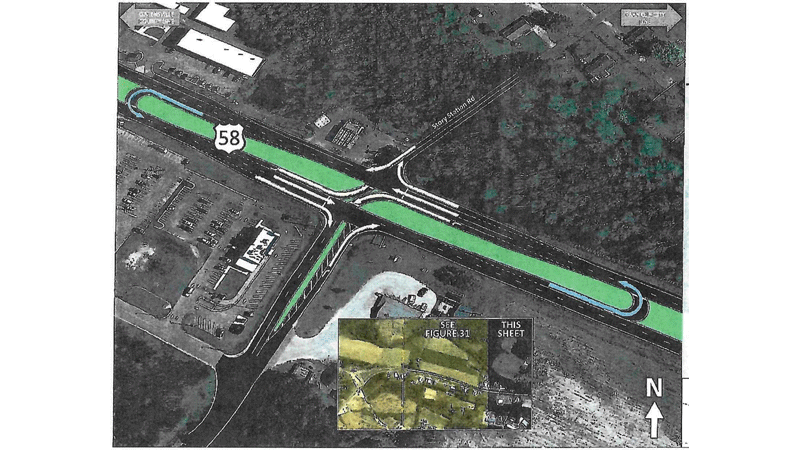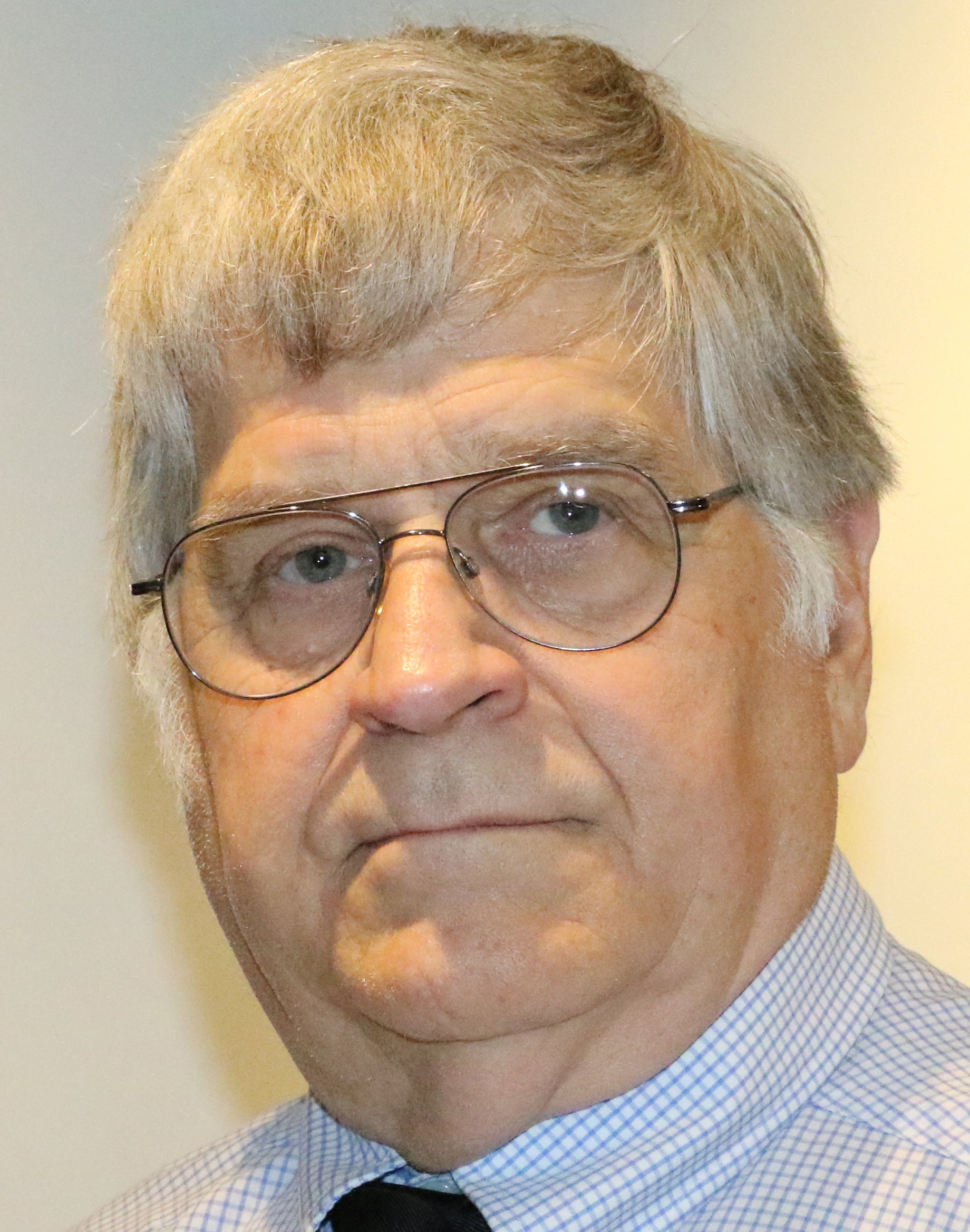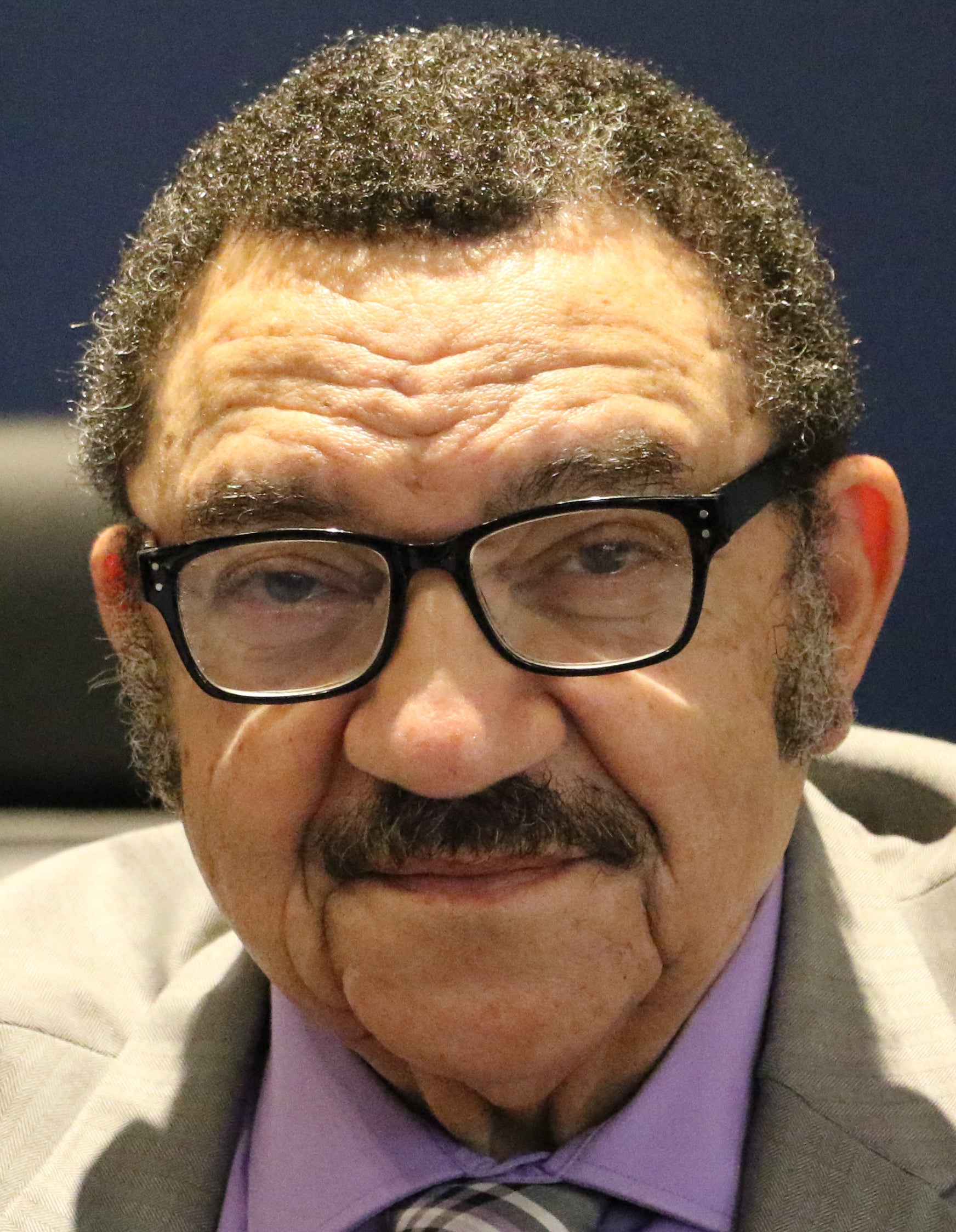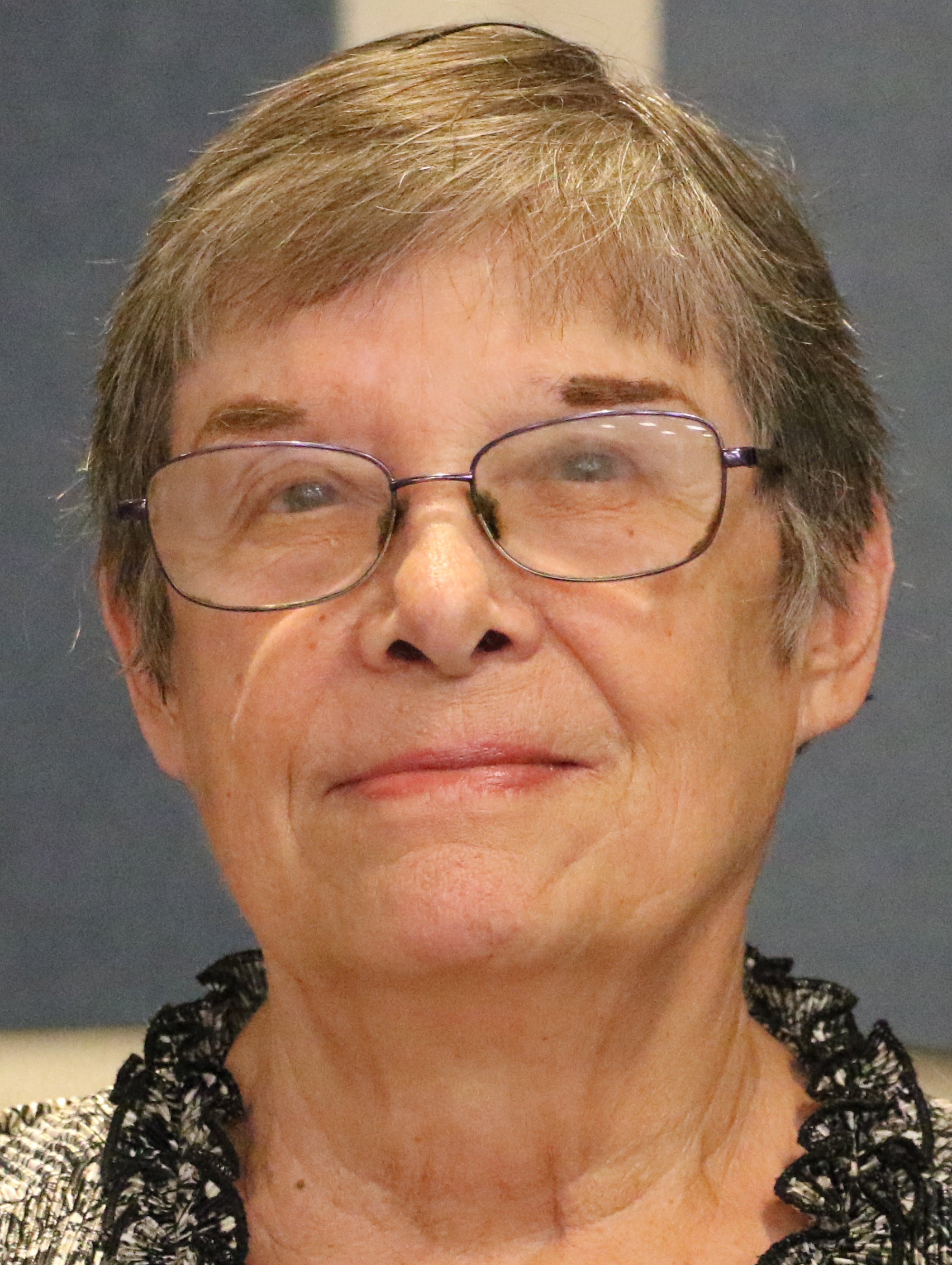Board opposes RCUT at key Courtland intersection
Published 12:45 pm Wednesday, March 20, 2024

- Pictured is an illustration of how the U.S. 58-Storys Station Road intersection in Courtland would look of it were reconfigured into a signalized Restricted Crossing U-Turn, also known as an RCUT. This illustration was part of the U.S. 58 Arterial Preservation Plan released in 2019. (Image courtesy of Southampton County)
|
Getting your Trinity Audio player ready...
|
The Southampton County Board of Supervisors voted unanimously Feb. 27 to oppose the concept of a Restricted Crossing U-Turn at the U.S. Route 58/Storys Station Road intersection in Courtland.
The Virginia Department of Transportation describes a Restricted Crossing U-Turn, also known as an RCUT, as follows:
- Intersection design where all side street movements begin with a right turn;
- Side street left-turn and through vehicles turn right and make a U-turn at a dedicated downstream median opening to complete the desired movement; and
- Main intersection and median U-turns can be designed as signalized, stop controlled or yield controlled.
In a staff report found within the Feb. 27 board meeting packet, Southampton County Administrator Brian S. Thrower explained that due to ongoing safety concerns noted by the Board of Supervisors and citizens with regard to the U.S. 58/Storys Station Road intersection, county staff was asked to consult with VDOT staff regarding potential improvements to the intersection.
During this consultation, staff examined a U.S. 58 Arterial Preservation Plan that was released in June 2019.
“That plan calls for reconfiguring the U.S. 58/Storys Station intersection to a signalized Restricted Crossing U-Turn and constructing U-turn areas east and west of the existing intersection,” Thrower wrote. “In terms of safety, nationally, RCUTs have decreased fatal crashes by 70% and injury crashes by 42% after installing an RCUT.”
He noted that after discussing potential intersection improvements with VDOT staff, both he and Southampton County Community Development and Planning Director Beth Lewis recommended the county move forward with submitting a SMART SCALE application to fund the RCUT project.
Then Thrower outlined how different county groups responded to the RCUT concept.
He stated that the Citizens Transportation Advisory Committee discussed the proposal at its Jan. 4 meeting and recommended 3-1 that the county not proceed with submitting the concept as a SMART SCALE application.
The Southampton County Planning Commission discussed the concept at its Feb. 8 meeting and voted 8-0 to deny the project as presented, with one commissioner abstaining due to lack of information.
At the Board of Supervisors’ Feb. 27 meeting, there was no scheduled public hearing on the RCUT, but citizens spoke on it during the Citizens Comment Period, and Central District Supervisor and Board Chair Dr. Alan W. Edwards allowed for comments during the SMART SCALE application agenda item.
The three-plus-hour meeting was well-attended at the Southampton County Office Center, with some individuals standing at certain points of the meeting due to lack of vacant seats.
Eighteen members of the public spoke about the RCUT, expressing either concerns with it or outright opposition to it. No member of the public spoke in clear favor of it.
Edwards began his comments on the RCUT by noting that the Citizens Transportation Advisory Committee and the Planning Commission voted against it.
“And I’m going to say this and I’ll stick my neck out — there was an effort to keep this from going to the Planning Commission, but the board here insisted that it go to the Planning Commission,” he said. “That bothered me greatly. I’m the representative on the Planning Commission for the board.”
He said he received multiple calls about the RCUT, and he had not received one positive call.
“All were negative against this with good reasons,” he said. “The Planning Commission debated this a long time and came up with a lot of good reasons not to go through with it.”
He said, “The other thing that bothers me in this process was none of those businesses in that area were notified or received any education on what was going to happen there. So for those reasons that I’ve outlined, I’m adamantly opposed to it.”
Thrower then revisited and expanded upon some of the points from his staff report.
“The reason this is on the agenda, this has been a safety concern noted by the board since I’ve been here,” he said, indicating that citizens and staff were asked to talk to VDOT. “Beth and I did talk to VDOT, and at that time were alerted to the U.S. 58 Arterial Preservation Plan that was done in 2019 that goes from Suffolk to Emporia that talks about safety improvements through that corridor. So that is what we came back with staff-wise.
“This is not to go build an RCUT tomorrow,” he continued. “This is simply a conceptual idea to submit an application to be hopefully approved by VDOT in their SMART SCALE application process. Even if it were approved by VDOT, it wouldn’t be constructed for years out.
“So what we did was went back and looked at a plan that was already adopted by VDOT, and it shows this is the recommended improvement in that area,” he said.
He reiterated the percentages showing RCUTs have significantly decreased fatal and injury crashes nationwide.
“So if safety is your main issue, this has proven to be the safest design concept that you can do to implement safety measures,” he said.
Edwards said, “Let me just say something to rebut that. I’m definitely against that concept because this board has asked to have measures put in there for safety. Lower the speed limit — for years we’ve been asking that. Lower the speed limit, put in a light to catch the speeders and everything like that, and it’s never happened. So I think this is a draconian, giant way of doing something that could have been done in a much simpler way.
“And if it’s going to be three or four years from now, what are we supposed to do for the next three or four years?” he asked.
Thrower said that VDOT Residency Administrator Paul Matticks was in attendance at the meeting and could list some short-term measures that can be taken in the area of the U.S. 58/Storys Station Road intersection to affect potential safety improvements.
Matticks started by citing one thing that has already been done, referencing the installation of flashing amber lights that come on before the intersection’s red light is going to come on, alerting motorists as they are approaching the intersection to slow down for a stop.
He then cited something that is going to be done.
“If you travel 58 in either direction as you approach the light, there are remnants of rumble strips that we put across 58 in each direction approaching the lights,” he said. “They’re going to be redone. We’ve worked with traffic engineering to get the contractor to come out and redo those rumble strips, and that’s just another way for everyone to be alert approaching the traffic signals up ahead.”
He said that other options the board can look at include red light cameras to catch those running the light or deploying extra police in the area to aid with law enforcement.
“Like Brian said, when we looked at this, we went back to the arterial study that was done in June of 2019 where they had proposed an RCUT there as a means of getting through there and looking at safety,” Matticks said. “Safety is obviously something that’s very important and does come along with those RCUTs — it’s just built in. The safety that they look at when you have a traffic light, you’ve got people turning and crossing, that’s where you get a lot of those more serious and more fatal accidents. Doing the RCUT, you’re limiting that at that intersection…”
He alluded to the numbers that indicate RCUTs reduce crashes.
“There’s a lot of information on RCUTs,” he said. “The states that do use them — Virginia is one them — they work when they put them in those locations. So it is something that is an option for the board to look at for that location, looking at and talking about safety.”
In response to a comment from a member of the public that questioned the efficacy of the flashing amber lights installed in advance of the U.S. 58/Storys Station Road intersection, Matticks indicated that with traffic engineering, VDOT can examine the distance of those flashing lights and run a study to make sure they are working and giving enough distance and enough time for motorists to stop at the red light.
Matticks fielded questions from supervisors and members of the public.
There were concerns that the studies already conducted were not about an RCUT replacing a stoplight but rather a stop sign, which some indicated could be a key distinction.
Hunter Darden, who runs Retro Flex Gym near the intersection, said, “What if one of these businesses close to this interaction has an emergency and EMS has to come from the other side of the highway?”
When the focus of the Feb. 27 meeting turned to supervisors’ comments on the RCUT concept, Southwest District Supervisor Lynda T. Updike said, “I’ve gotten beaucoups of phone calls the last two weeks, emails, and not one positive comment.”
Southwest District Supervisor Carl J. Faison referenced a business near the intersection when he said, “Food Lion has been my favorite store ever since it’s been here, and I frequent there a lot, and when I’d leave Food Lion when it first opened, I used to come out to 58 and turn around, but now I always go to the stoplight because I feel it’s safer. But when I go to the stoplight, I’m careful. I don’t just go out as soon as the light changes. I wait to make sure it’s clear, and then I go out at that stoplight.”
Northeast District Supervisor Christopher D. Cornwell Sr. said that people realize the RCUT concept is being proposed for safety.
“If it’s for safety, then I fail to see how we’re going to accomplish that with the RCUT,” he said.
He asked where the fatality and crash data was.
“What is it that we’re really trying to accomplish here?” he said. “What are we trying to avoid by spending this money here at this intersection? Our Citizen Transportation (Advisory) Committee is 3-1 against it, our Planning Commission is 8-0 against it, our citizens and business owners are against it. I think it’s a no-brainer for us as a board as far as what we need to do with it. I really fail to see any benefit to it at this juncture.”
He said he would want an RCUT at the Ivor stoplight if he felt like there was any great benefit to them at all.
He then asked why the speed limit in the general area around the U.S. 58/Storys Station Road intersection was 50 mph as opposed to 45 mph.
“Why don’t we suggest that the speed limit there be 45 miles an hour and it actually be enforced as such?” he said. “That seems to me to be a safer solution than a major highway project.”
Faison said, “I appreciate VDOT, and I appreciate the work that they do, and I think we need to understand what it is that we are doing: We’re looking for the best solution at this place, OK? VDOT was asked to give a recommendation for improvement. That’s what they did.
“There used to be a song that I would sing to my wife sometimes,” he added, noting that its lyrics were, “There is no good guy, there is no bad guy, it’s just you and me, and we just disagree.”
This drew good-natured laughter from supervisors and members of the public.
“Would you like to sing that?” Edwards asked, and Faison replied with a laugh, “I don’t want to run the people out by singing.”
But he reiterated, “I just want to express my appreciation to VDOT for all that they do, including bringing us this particular recommendation, not forcing it down our throat, but bringing it to us so we can consider it.”
Updike said, “I make a motion that we oppose the RCUT,” and Faison seconded it.
Edwards noted that the vote in support of the motion was unanimous.
“I mirror what Carl says,” Edwards said. “We’re all interested, and this has been a bone of contention for a long time with the safety things, and we all feel there’s a lot of things that we can do short of this major construction.”
Updike said, “I think we need to recommend to reduce the speed limit to 45.”
Edwards said, “Well, I think we’ve recommended that before and different things. We’ll get into that later.”










